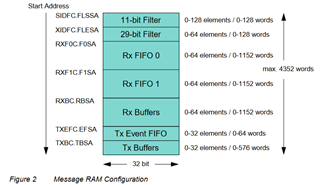Hi,
When we configured the bottom layer (TCAN layer) sending channel, we found that if we send them all to Basic_TxObject, the chip feedback will be busy, so we need to configure the message to be sent to Full_TxObject.
Do you have any reasonable suggestions?
(Which type is configured as basic and what type is configured as full)
Thanks!


